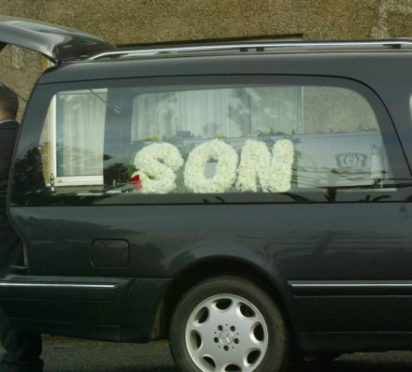
Grieving households should be allowed to form “bereavement bubbles” with others who have lost loved ones during any future coronavirus lockdown, a charity believes.
This would help families feel less isolated and alone as they go through the grieving process, said the Sue Ryder charity.
Its research found 62% of people bereaved since the end of March felt this way, while 59% felt as though their grief has been forgotten.
Two-thirds of the 503 adults surveyed said forming a support bubble would be a “vital source of support”.
The research also found that 62% feel the nation has become “desensitised to death”, while 55% feel their loved ones’ death is “just a statistic”.
Currently single adult households can form a support bubble with another household without needing to adhere to social distancing.
The Government is being urged to extend this to bereaved households containing more than one adult, such as housemates or older children, during any local or national lockdown.
Carolyn Harris, MP for Swansea East, is backing the call in a letter to the Health Secretary, Matt Hancock.
She said: “Grief is extremely complex – even without the added anxieties of the coronavirus pandemic and lockdown.
“For many people who have been bereaved since lockdown began, this has been an incredibly isolating time.
“The ability to form a bereavement support bubble without the need for social distancing, as single adult households are currently able to do, could make a huge impact for someone who is grieving.”
Sue Ryder has seen a spike in demand for its bereavement support services, including online video counselling and an online community forum.
Chief executive Heidi Travis said: “Integral and deeply personal elements of the bereavement journey have been disrupted for so many over the last few months due to social distancing measures.
“So many people have been unable to say goodbye to those who have died, they have then had to grieve in isolation, without the physical presence or touch of those close to them.”
Matt Williams, head of information and support at terminal illness charity Marie Curie, added: “People accessing our bereavement support service are telling us that the absence of normal support networks such as friends and family is proving incredibly tough.
“Many people have not been able to say proper goodbyes, attend funerals or hug friends and family. Bereavement bubbles could help alleviate this and the potential long term effect complicated grief can cause.”
A Department of Health and Social Care spokeswoman said: “We recognise how difficult it has been for people to be cut off from their friends and family, and that this has been a significant issue for those who live by themselves. Support bubbles were introduced to assist the loneliest and most isolated in society.
“Any changes to the guidance on social contact will be made in line with the latest available scientific evidence.”

Enjoy the convenience of having The Sunday Post delivered as a digital ePaper straight to your smartphone, tablet or computer.
Subscribe for only £5.49 a month and enjoy all the benefits of the printed paper as a digital replica.
Subscribe